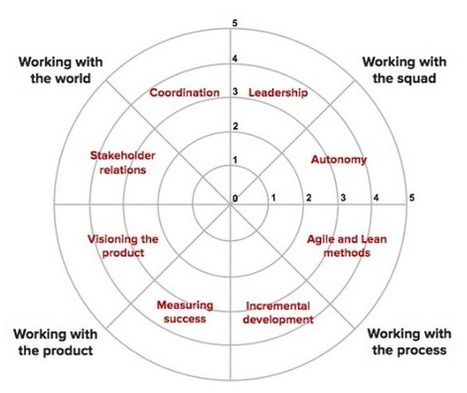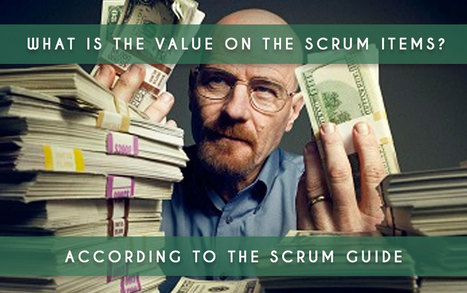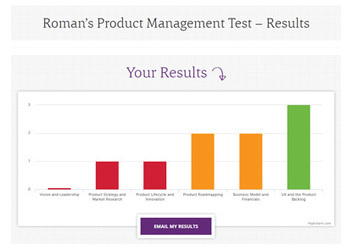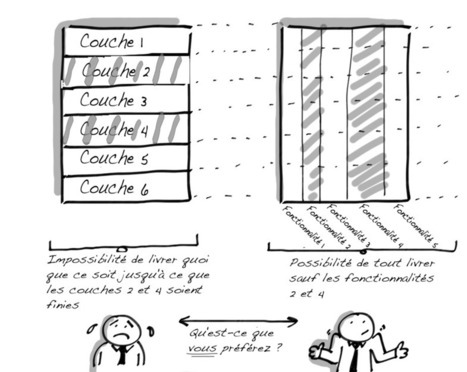 Your new post is loading...
 Your new post is loading...

|
Scooped by
Mickael Ruau
June 12, 2020 5:07 AM
|
The Product Owner Framework is a tool for Product Owners to evaluate their skills and identify areas for growth. It was created by Daisy Pilbrow and Javier Ubillos, an Agile Coach and a Product Owner at Spotify and continues to be developed and expanded upon by Daisy and Viktor Cessan, another Agile Coach at Spotify.…

|
Scooped by
Mickael Ruau
June 12, 2020 3:15 AM
|
Presentation given at the IIBA Chicagoland session on April 2, 2014.

|
Scooped by
Mickael Ruau
June 5, 2020 3:23 AM
|
Êtes-vous prêts pour le passage de la certification PROFESSIONAL SCRUM PRODUCT OWNER ? Entraînez-vous en condition réelle avant de passer l'examen !

|
Scooped by
Mickael Ruau
June 3, 2020 2:26 AM
|
Le Product Owner est le garant du backlog. Il doit donc pouvoir à tout instant connaître la santé de ce dernier et consolider certains indicateurs.

|
Scooped by
Mickael Ruau
June 2, 2020 5:19 AM
|
Après une première présentation sur la rédaction des User Stories, je mets à jours une nouvelle présentation.

|
Scooped by
Mickael Ruau
April 22, 2020 9:14 AM
|
Download the Tool The Product Vision Board Helps you describe, visualise, and validate your product vision and strategy. It captures the target group, user needs, key product features, and business goals. The extended Vision Board also describes key elements of your business model including competitors, revenue sources, cost factors, and channels.

|
Scooped by
Mickael Ruau
March 17, 2020 2:34 AM
|
This is the version of my talk, Be A Great Product Leader, updated for presentation on October 8, 2019 at the Amplify conference in San Francisco.

|
Scooped by
Mickael Ruau
March 3, 2020 12:40 AM
|
Talk at LAST Conference 2019

|
Scooped by
Mickael Ruau
February 27, 2020 1:33 AM
|
Presented at Agile BA & PO meetup on May 15th 2019

|
Scooped by
Mickael Ruau
January 29, 2020 1:07 AM
|
S'intéresser à la taille de ses user stories et les découper lorsqu'elles sont trop grandes est une bonne pratique. Cela permet d'éviter l'effet tunnel, de produire de la valeur rapidement et de contribuer à une meilleure organisation du travail de tout le monde. Encore faut-il les découper efficacement afin qu'elles soient testables et créent de…

|
Scooped by
Mickael Ruau
January 24, 2020 4:22 AM
|
Scrum product owners play an important role in Agile product development. Learn about how this role can help with your product development in this post.

|
Scooped by
Mickael Ruau
January 23, 2020 2:07 AM
|
Each item in scrum have to be defined by a value. But scrum never explain what is the value on the items. Let see in this article how to define it and our recommandation.

|
Scooped by
Mickael Ruau
January 21, 2020 4:12 AM
|
[TODO: Fix Links. For more info, see: ScrumCrazy.com is Moving…] Please consult the current Scrum Guide for the definition of Scrum. This article is simply a supplemental musing, intended to be in line with the Scrum Guide, but focusing more on describing the Product Owner role in Scrum from the Product Owner’s point of view.…
|

|
Scooped by
Mickael Ruau
June 12, 2020 4:47 AM
|
Test your product management knowledge to become an even better product professional! Completing this test takes only five minutes of your time. Simply assess your current capabilities by clicking on the appropriate number. 0 means that you have no knowledge or ability; 1 means that your knowledge or ability is weak; 2 says that you have some ability; and 3 means that you are fully …

|
Scooped by
Mickael Ruau
June 9, 2020 2:25 AM
|
Cette présentation s’adresse aux nouveaux propriétaires de produits, particulièrement à ceux qui proviennent de milieux non TI. Les PO plus expérimentés qui ch…

|
Scooped by
Mickael Ruau
June 4, 2020 8:52 AM
|
Despite a recent explosion in paid courses to develop product management talent such as General Assembly, Product School and Knowledge Officer, the main way product managers are brought up is through…

|
Scooped by
Mickael Ruau
June 2, 2020 5:24 AM
|
Formation au métier de Product owner

|
Scooped by
Mickael Ruau
June 2, 2020 5:15 AM
|
27.03.2012 : ScrumDay Paris organisé par le FrenchSUG. Voici ma présentation sur l'animation des ateliers de collecte des besoins utilisateur.

|
Scooped by
Mickael Ruau
March 20, 2020 1:55 AM
|
Naming your task, bug and user story titles has more impact than you might think. Here is a list of common formats for naming your tasks.

|
Scooped by
Mickael Ruau
March 10, 2020 2:07 AM
|
This post is an excerpt from the book that we’re writing, the ‘Zombie Scrum Survival Guide’. It’s our way of delivering small increments and involving our stakeholders: you, the reader. So we’d love…

|
Scooped by
Mickael Ruau
February 29, 2020 11:32 AM
|

|
Scooped by
Mickael Ruau
February 12, 2020 4:21 AM
|
Comment prioriser aux 3 étapes du developpement produit : Au pré-lancement - Au Post-lancement - Prioriser avec un produit mature

|
Scooped by
Mickael Ruau
January 28, 2020 2:18 AM
|
What's the difference between Product Management and Product Ownership? Are they the same thing, or different? It’s ok, no one seems to know. Rather we find the answer lies in where it all began - where they came from.

|
Scooped by
Mickael Ruau
January 23, 2020 8:15 AM
|
Nous devons écrire à propos de ce que nous ne devrions pas faire, les anti patterns, les mauvaises odeurs comme je les appelle. Lors des prochaines semaines, je vais passer un peu de temps à écrire là-dessus. J’écrirai plusieurs articles sur les mauvaises odeurs dans les différents rôles de Scrum et sur les différentes erreurs que font habituellement les entreprises lorsqu’elles implémentent scrum. Je commencerai cette série sur les mauvaises odeurs des product owners. J’ai déjà écrit ici sur les problèmes arrivant d’ordinaire aux product owners dans les organisations, et aujourd’hui je vais ajouter de nouveaux problèmes à cette liste.. Si vous êtes intéressés par les anti patterns, cliquez là, vous y trouverez tous les articles de mon blog sur ce sujet.

|
Scooped by
Mickael Ruau
January 22, 2020 4:21 AM
|
Wherever you look, digital products are popping up: banks, universities, retailers, gyms; everyone’s got one. And that’s thanks, in part, to the product owner role that takes digital items from user requirement to end product via a load of technical decision making. We explore how a typical day stacks up for a product owner.
|
 Your new post is loading...
Your new post is loading...
 Your new post is loading...
Your new post is loading...






















